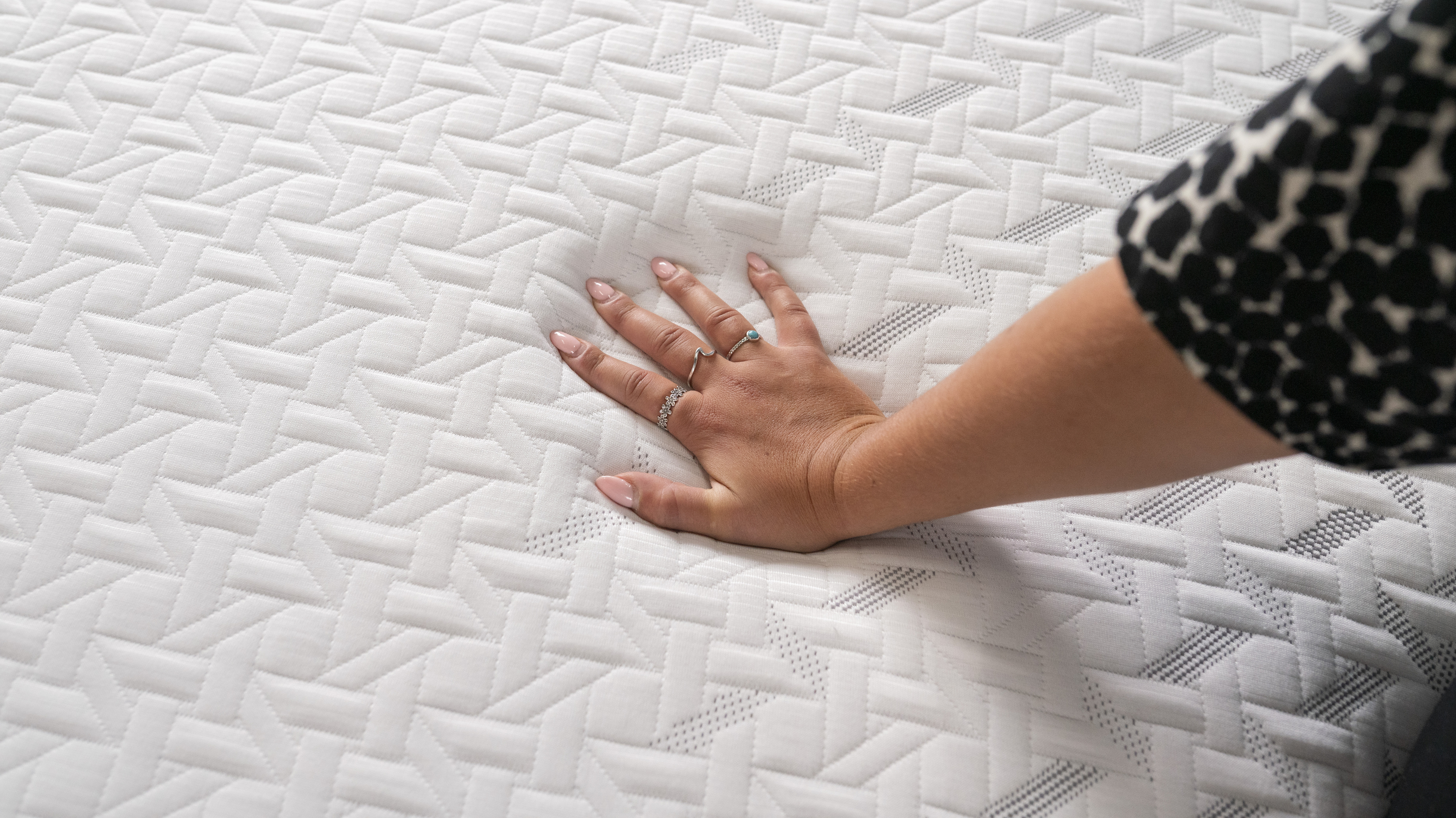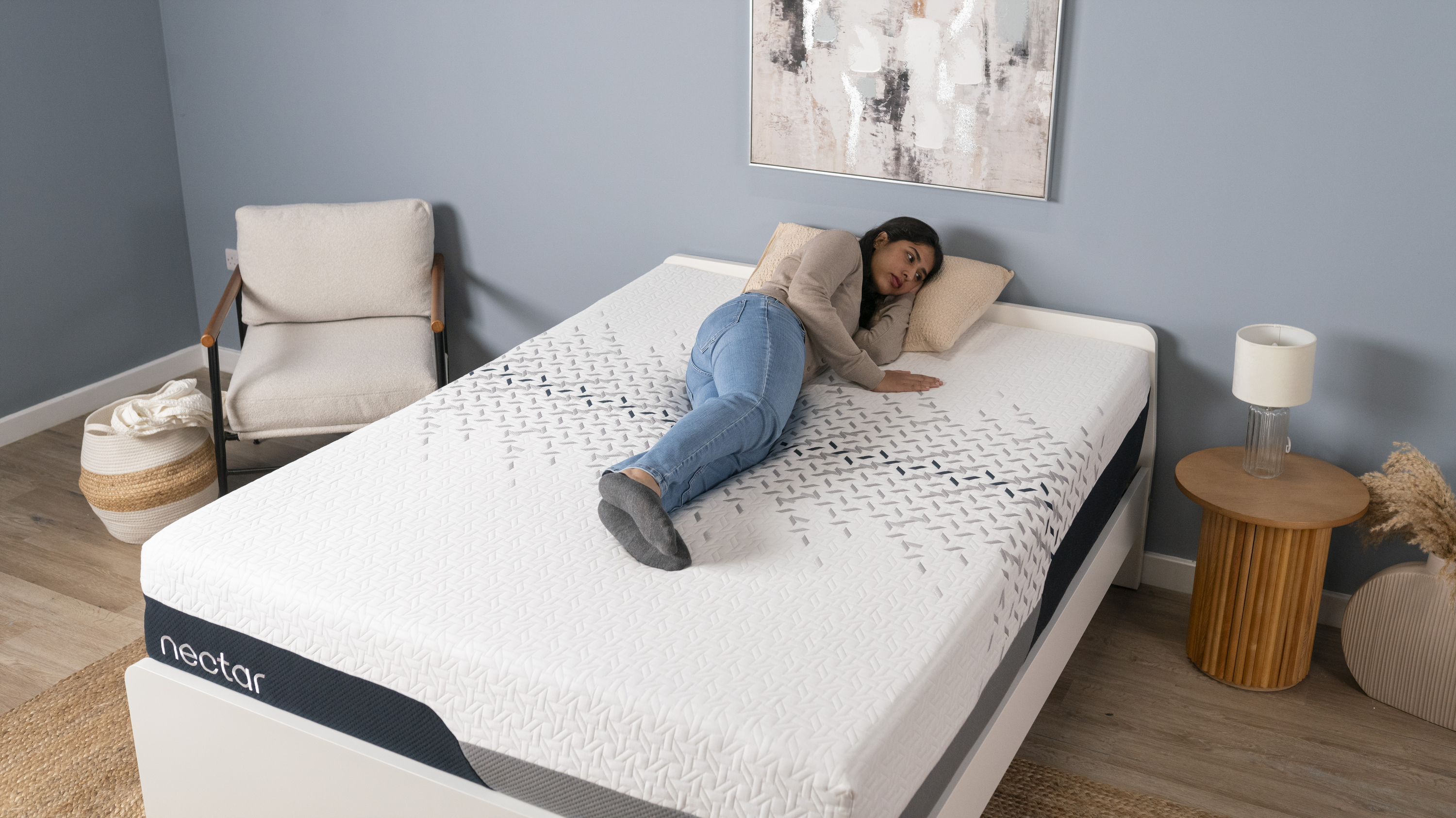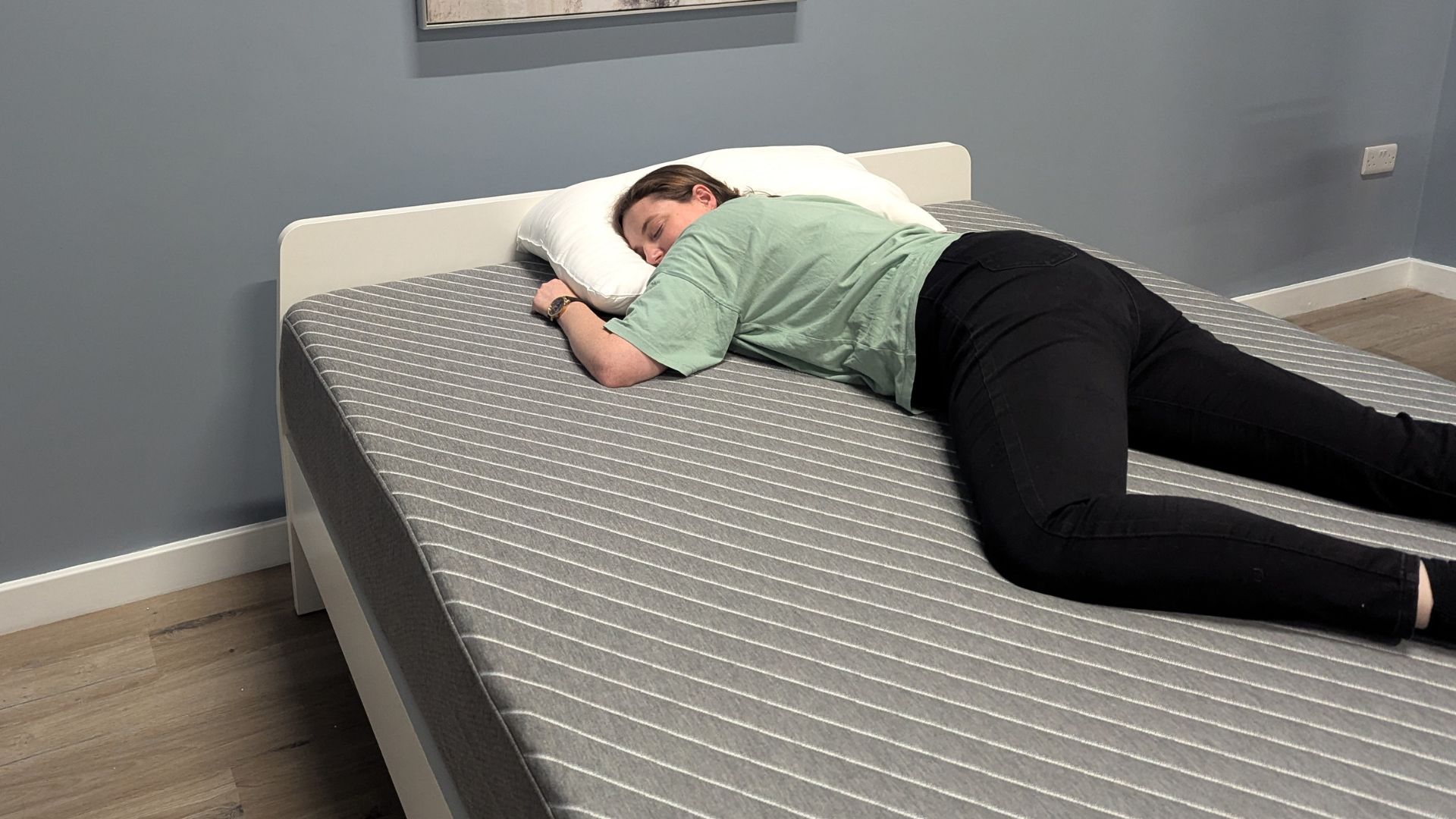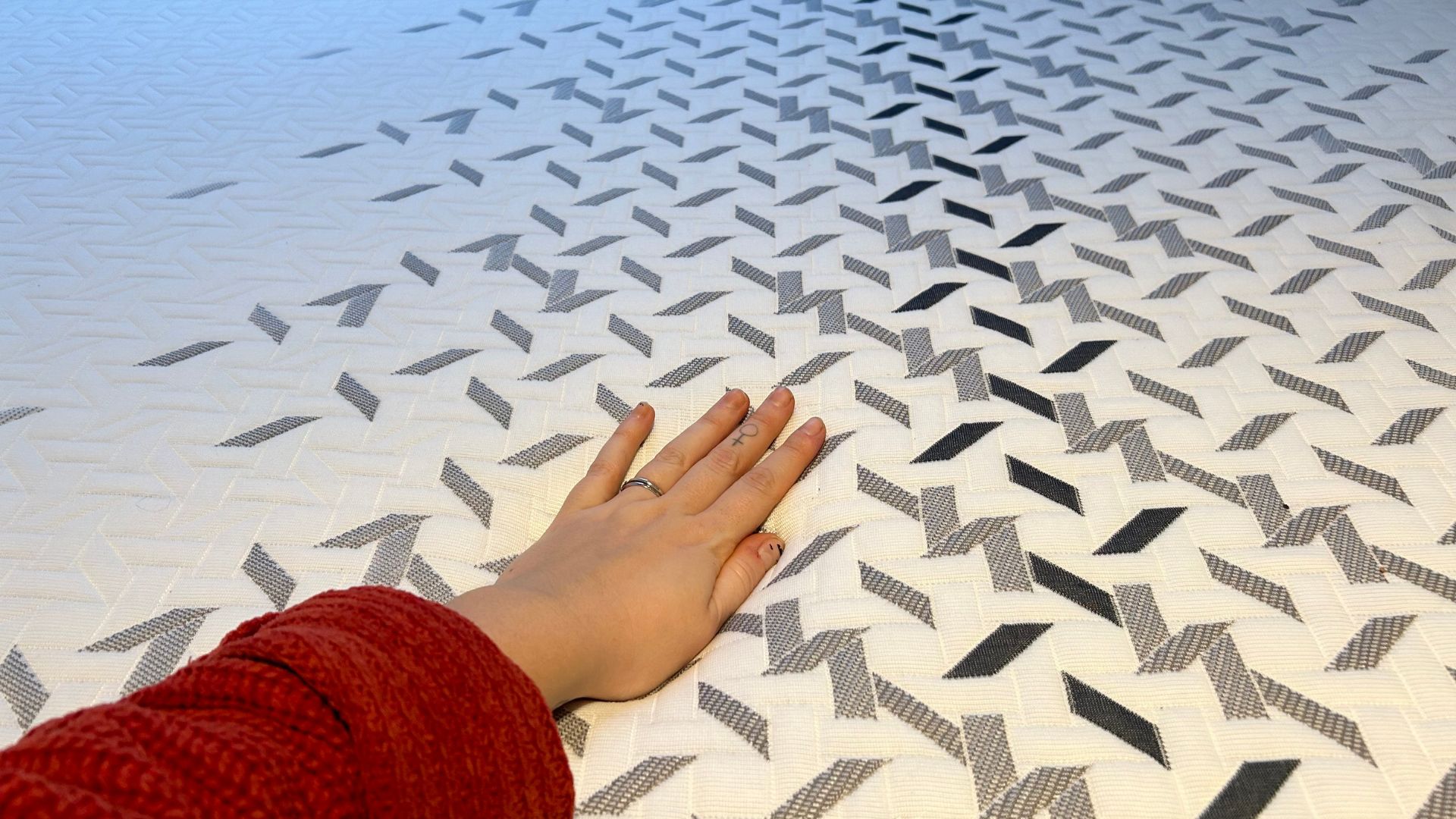How to choose a memory foam mattress that suits your sleep style
You need to consider your sleeping position and preferences to find the right memory foam mattress for you

If you're looking to invest in a new mattress, you're likely considering a memory foam mattress. They're one of the most popular types of mattresses on the market, known for their hugging feel and sinking sensation. However, now they come in many different varieties, providing completely different sleep experiences. So how do you choose the right memory foam mattress for you?
Many of our top picks on this year's best mattress guide are made from memory foam. The material is designed to cushion sleepers and relieve pressure from key areas while keeping the spine aligned. But you can get soft, firm, cooling and gel memory foam now, which feel different and suit different sleepers.
With the Presidents' Day mattress sales coming up, it's a great time to invest in a new bed. To help you choose your next memory foam mattress, we're delving into what you can expect from them in terms of feel and firmness, temperature regulation, motion isolation, and edge support.
What is a memory foam mattress?
Memory foam mattresses are made of polyurethane viscoelastic foam, and this material moulds to the shape of any pressure applied to it. In fact, it was invented by NASA to keep pilots cushioned and to relieve pressure during flights. In 1991, TEMPUR-Pedic released the first memory foam mattress onto the market. Since then, memory foam mattresses have become incredibly popular, praised for how they conform and contour to your body shape, relieve pressure, and isolate motion well.
Thankfully, brands have developed new technologies and practices in the construction of memory foam mattresses to combat some of the drawbacks of the material. You can see the diversity of memory foam mattresses in the market now, with the best memory foam mattresses offering specialist support and comfort for different sleep needs, like overheating and back pain.
How to choose a memory foam mattress
Before buying a memory foam mattress, there are several things to consider so you can make sure you choose the right memory foam mattress for you.
1. Consider your sleeping position

Those who sleep on their back or stomach need a firmer mattress that keeps their body supported and spine aligned. You won’t sink into the Puffy Cloud Memory Foam Mattress or the Plank Firm Mattress, making them good choices for back and stomach sleepers. The same can be said for the Tempur-Pedic Tempur-Adapt Mattress.
Side sleepers need more plush mattresses to relieve pressure in key areas like the hips, shoulders and knees, like the GhostBed Luxe. Memory foam mattresses come in all different firmness feels, so no matter your sleep position, you’ll find a suitable option. You can also find memory foam mattresses that will suit both back and side sleepers like the Nectar Classic Memory Foam Mattress.
2. Do you sleep hot?
Memory foam tends to do a poor job at temperature regulation. This is because the material is thick and dense, making it less breathable and more prone to trapping heat. Not to mention, when memory foam hugs your body, it absorbs your body heat and is unable to wick that heat away, which can result in overheating or sweating.
Some designs address this issue by perforating the memory foam to allow for more air flow or adding cooling gel to the memory foam. Though it can have varying degrees of success, so if you experience night sweats often, it’s worth choosing from the best cooling mattresses.
Sign up to get the BEST of Tom's Guide direct to your inbox.
Get instant access to breaking news, the hottest reviews, great deals and helpful tips.
3. Consider your preferences
Memory foam mattresses excel in motion isolation, making it the perfect choice for couples or those with pets and children who crawl into bed in the middle of the night. In terms of edge support, low quality memory foam mattresses do a poor job. Others excel in edge support, Siena in particular excelled in both edge support and motion isolation during the Siena Memory Foam Mattress review. To achieve this, some brands are reinforcing the edges with a perimeter of firmer memory foams.
When purchasing a memory foam mattress, you should also think about how it feels. Memory foam mattresses used to have a marshmallow feel that resulted in your body sinking into the mattress. You can still find that in some memory foam mattresses like the Zinus Green Tea Memory Foam Mattress, however, many memory foam mattresses now have a medium to firm feel, like the Saatva Contour5, which offers better support and pressure relief.

4. Set a budget
Memory foam mattresses range in price with some queen sizes as low as $179. That said, the cheaper it is, the more likely it’s made with lower density memory foam resulting in less support, a shorter lifespan and/or poor temperature regulation.
If you can increase your budget and invest in a better memory foam mattress, you could save yourself from a lot of aches, pains and sleepless or hot nights. Not to mention, you won’t have to buy a new mattress in 6 years or less. Some memory foam mattress brands even offer lifetime warranties now.
5. Know your materials
Memory foam is a polyurethane foam filled with chemicals, some of which are obtained from petroleum, to make a viscous and elastic material that can mold to the shape of your body. The denser the memory foam, the more supportive and contouring it is. Low density memory foam is softer, cheaper, and won’t last as long.
It’s important when buying a memory foam mattress to invest in those with the least amount of harmful chemicals particularly formaldehyde or flame retardants. Buy from companies that are transparent about what they use in their memory foam, as well as those that use plant-based memory foams. Ensure the foam used is Certi-PUR certified to ensure the levels of harmful chemicals and VOCs, or volatile organic compounds, are safe.

3 things to know before buying a memory foam mattress
1. They last around 7-10 years
Memory foam mattresses have an average lifespan of 6 to 10 years, though there are some that can last 15 years or longer, but they’re few and far between.
By the end of its lifespan, a memory foam mattress will begin to sag or dip, and you’ll start to sleep restlessly or wake up with sores and aches. A variety of things can affect the lifespan of a memory foam mattress. Heavier weight can break down the foam faster, especially if its lower-density memory foam.
Plus, the more you sleep on it, the faster a memory foam mattress wears out. Rotating your mattress and using the right supportive base can help, but ultimately, because memory foam is entirely synthetic, it will break down quicker than an organic mattress. This is why most memory foam mattresses only come with a 10-year warranty.
2. They can be delivered in a box

The very first mattress to be shipped in a box was a memory foam mattress by BedInABox in 2004. Since then, many of the best mattresses in boxes are memory foam. They’re rolled, wrapped in plastic, then placed in cardboard boxes and shipped (usually for free) by FedEx or UPS to your front door.
This convenient process makes it more accessible for consumers to buy a mattress, without needing a truck to pick one up from the store.
3. Memory foam materials can off gas
If you’ve ever bought a memory foam mattress and noticed an unpleasant chemical smell when you unroll it – that’s because the mattress is releasing VOCs, or volatile organic compounds, into the air. VOCs, which are chemicals, can cause headaches, and irritate the eyes, nose, and throat.
It’s why some people are confused when they buy memory foam mattresses that state they’re hypoallergenic, and still have issues with their nose or throat when waking up in the morning. Some mattress brands have found ways to lower VOCs to less than 0.5 parts per million and note this with CertiPUR-US certification.
If you have asthma or are particularly sensitive to strong smells, you may want to opt for one of the best organic mattresses, which are completely free of chemicals.
Alex Temblador is a freelance mattress reviewer and writer that has extensively covered home and design for Tom's Guide, Dwell, Real Homes, Homes & Gardens, Gardeningetc., and Architectural Digest. Her travel, arts, and culture coverage has appeared in Travel + Leisure, The Daily Beast, Lonely Planet, Fodor’s, among others. When the Mixed Latine writer isn’t reviewing home products, she’s building her career as the award-winning author of two novels, Secrets of the Casa Rosada and Half Outlaw, from her home base in Dallas, Texas.
You must confirm your public display name before commenting
Please logout and then login again, you will then be prompted to enter your display name.

